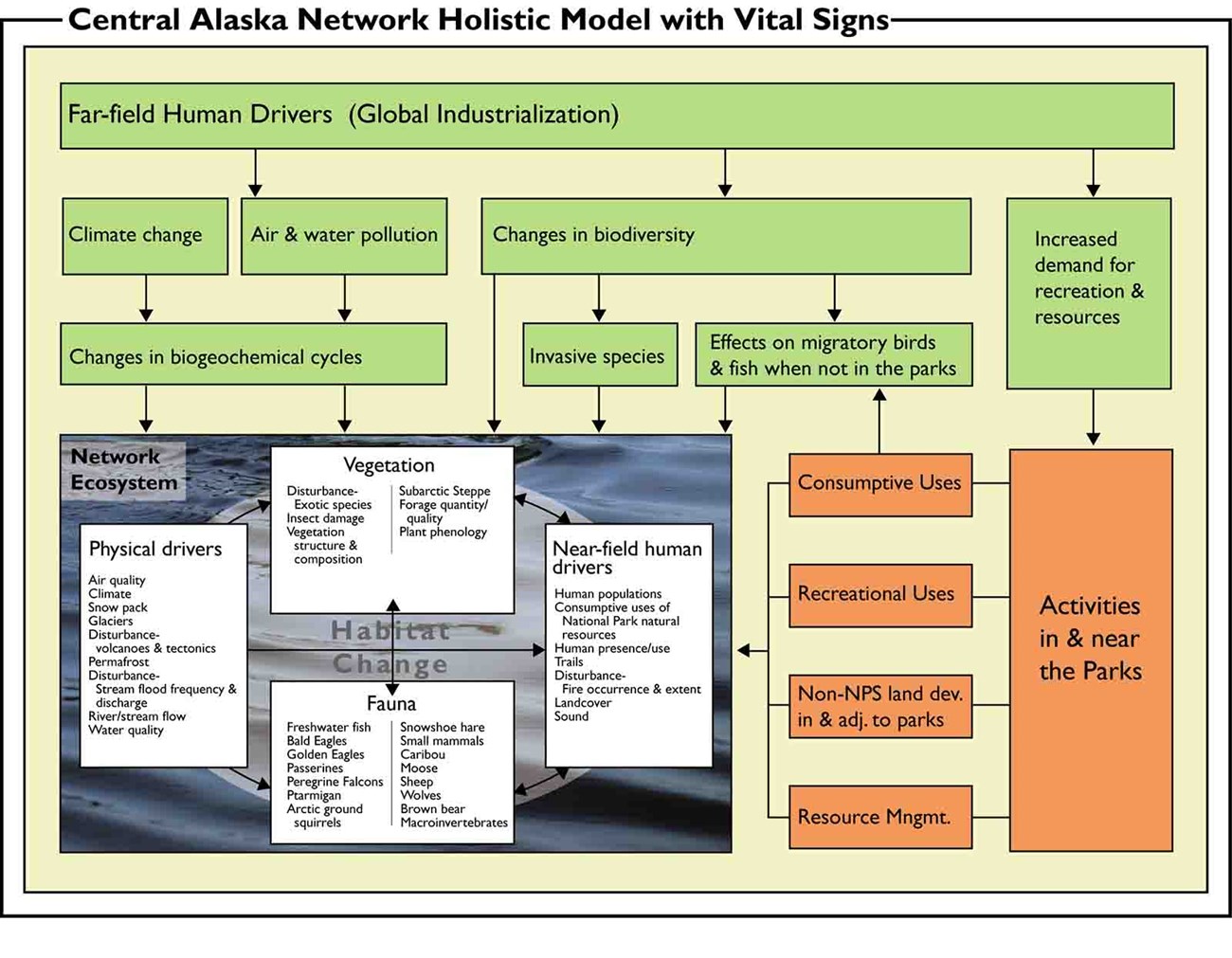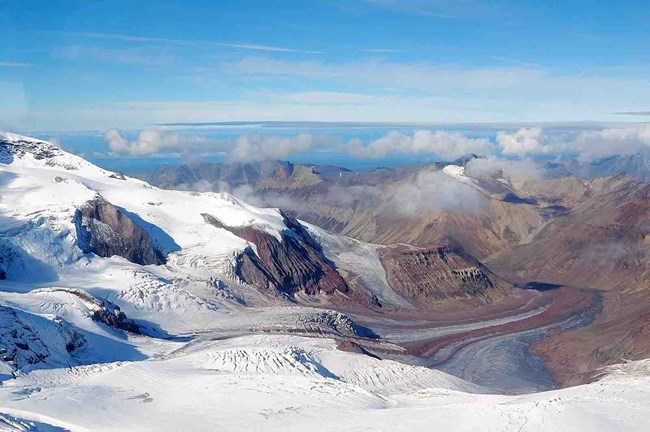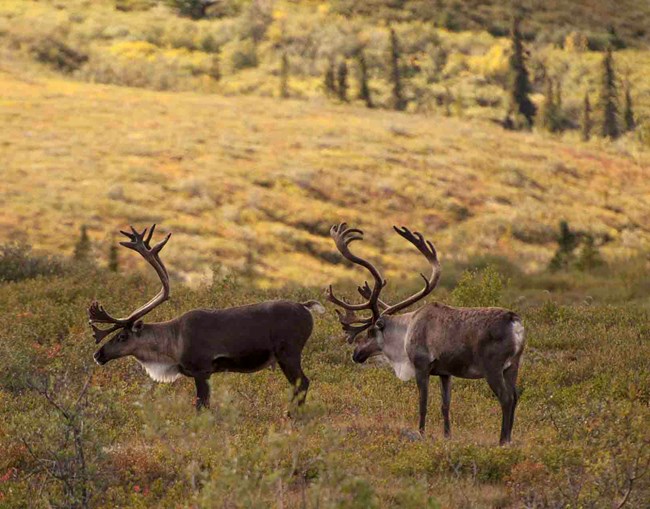
Based on our analysis, humans will act as drivers of change in Central Alaska Network park ecosystems at two scales: the far-field and the near-field. The far-field issues are related to global industrialization—climate change, air pollution, species additions and losses, and impacts to migratory birds and fish. Near-field issues are those related to human development and activities in and near parks. We considered the relative importance, or level of concern, the parks have about these drivers in order to strategically deploy our monitoring efforts.
The concerns related to humans acting as drivers in the near-field are important because of their potential to change the undisturbed and unfragmented nature of park ecosystems. Human activities in and near Central Alaska Network parks include (1) consumptive uses, (2) uses related to park visitation and recreational activities, (3) development of non-NPS land in and near the parks, and (4) resource management actions of the NPS and neighboring entities.
Park management decisions have a high probability to influence these concerns. Because of their potential to significantly impact park ecosystems, and because park decisions can reasonably be expected to prevent or reduce those impacts, the suite of issues related to near-field human drivers ranks highest in our listing of resource preservation concerns.
Next in importance to park management are concerns that stem from global industrialization. Pristine air quality is a key value of Denali, a Class I area under the federal Clean Air Act. The issue of air pollution is therefore important, and the documented occurrence of episodes of Arctic haze and emissions from Asia indicate that network parks need to be vigilant. Climate change, also related to global industrialization, is a concern because observed and predicted warming has considerable potential to change park ecosystems. However, park management will not be in a position to take action that could change that trajectory. In this case, the main role of park monitoring will be to understand the trajectory of change related to warming and the implications for park resources.
A similar strategy applies to how parks should view protection of migratory birds and fish that may be subject to increased mortality, pollution, or habitat loss as a consequence of global industrialization when they are away from the parks. Monitoring these species within the park may provide early warning of problems that are occurring elsewhere. The potential for global industrialization to cause changes in biodiversity due to species additions and losses is also an important concern related to far-field human drivers. This concern underscores the basic need to know what species are in the parks and their general patterns of occurrence and distribution.
In summary, the resource protection concerns model recognizes current human activities acting as drivers in both the far-field and near-field. Although specific park resource preservation concerns will change over time, keeping this awareness of both far-field and near-field human activities seems like a balanced approach. This model helps the monitoring program to address concerns we are aware of now, while being robust enough to accommodate concerns we cannot predict at this time.
Following is a summary of some of the drivers of change in the Central Alaska Network parks.

Climate
The physical drivers important in the Central Alaska Network include climate, hydrology, seasonal snow cover, glaciers, permafrost, and disturbances related to tectonics (earthquakes, volcanoes), fire, flooding, landslides, and avalanches.
Many of the physical drivers are linked by their role in the water cycle. For the Central Alaska Network of parks, the amount and form of water that gets put into a system determines much of what kind of system exists. Temperature is critical in the hydrological cycle because of the thermal thresholds that determine melting and evaporation and also the number of days that plants can grow. Thus, “the hydrological cycle and disturbance” formed the central theme for the physical drivers that shaped the program.
The major gradients within the Central Alaska Network range from boreal areas that are dry, have high seasonal temperature fluxes (i.e., continental climate), and where fire is an integral feature of landscape processes, to maritime areas that are wet, have low seasonal temperature fluxes (i.e., maritime climate), and where wind is the main disturbance factor. In between these areas that are strongly boreal and strongly maritime lie two broad, mountainous units that are aptly labeled “transitional.” Within this transitional band, extreme topographic features locally affect dominant factors from both continental and maritime divisions.

NPS/Jay Elhard
Animals and Plants
Temperature and precipitation as they interact with landform, in addition to disturbance regimes, are the most important factors affecting vegetation. Primary producers form the energetic foundation of marine, terrestrial, and aquatic ecosystems, and provide the habitat structure for other forms of life. Vegetation will change as physical drivers change. Fauna in turn can respond to vegetation as well as change the vegetation.
Changes in fire frequency and intensity will affect habitat and therefore where plants and animals occur on the landscape. Similarly, if glaciers were melting, this melting would change river and stream characteristics (and therefore river and stream habitats) as well as landform characteristics. These changes would alter riparian habitats and where plants and animals occur on the landscape.
Thinking about habitat change as our central theme allows us to pursue similar lines of investigation in terrestrial and aquatic environments. Many of the changes we might expect to see to due to changes in the water cycle (e.g., increased thermokarst, changes in snow depth and length of cover) can be expected to have broad effects on the amount, distribution, and characteristics of both aquatic and terrestrial habitats.

Human Impacts
Human population growth and resulting industrialization drives all the concerns facing network parks. Global growth is the driver for climate change and the main source of long-distance air pollution and impacts to migratory birds and fish. Human population growth will increase settlement in Alaska, particularly in the Railbelt between Anchorage and Fairbanks, leading to local and regional industrialization and additional, closer sources of air pollution.
Increased settlement also will increase the number of nodes of access to the parks, especially Denali. Increased human population also will increase demand for new access to the parks and for increased number of facilities (settlement) within the parks. Increased settlement along the borders also increases demand for animal harvest, which will be facilitated by increased access. Demand for increased access could result in new roads or upgrades of existing roads (in Denali and Wrangell-St. Elias), which could increase gravel mining in these parks.
Last updated: March 15, 2018
